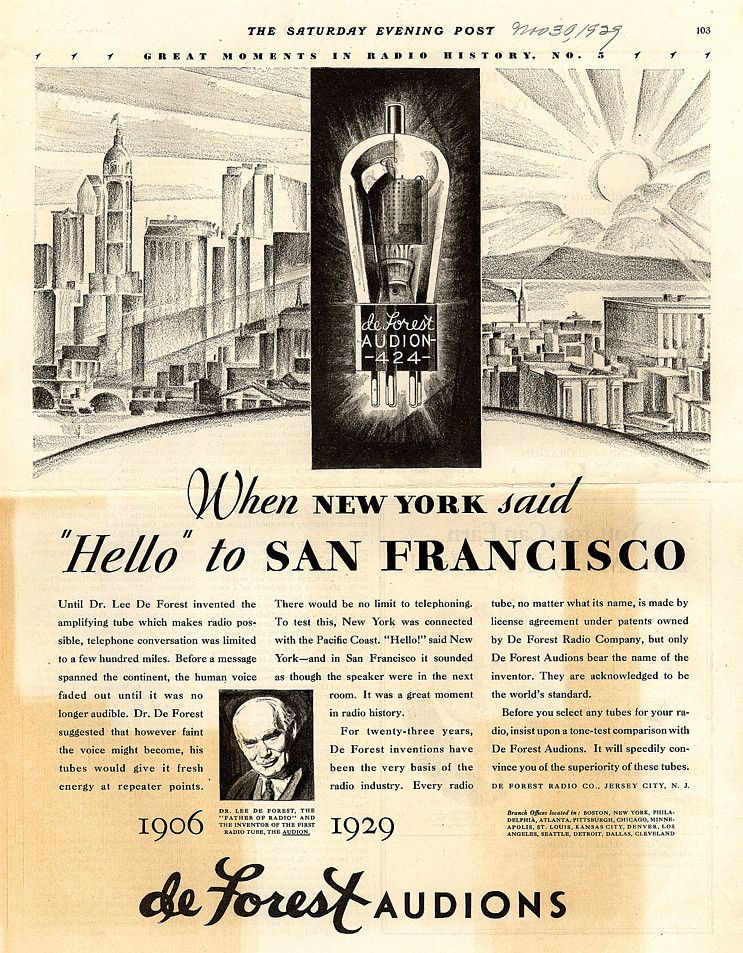This story relates to: Col. Hiram B Ely (1896-1987)
The Budding Engineer
The Emergence of Wireless Telephony
"Wireless is a thrilling pastime. Fancy a boy sitting in his room at home with his fingers on a telegraph key and a telephone receiver to his ear listening-in to the news of the world as it is flashed out from the great coast stations or by ships far out at sea! It's a great experience. Yet thousands of boys are doing this wonderful thing every day and night of the year, and you, my young friend, can do it as easily as they, for any boy can own a real wireless station, if he really wants to."--A. Frederick Collins, The Book of Wireless, 1915.
As he was growing up in the early 1900, Hiram Ely saw the key events in the birth of radio as a communication technology, and it caught the budding engineer's interest. In late 1928, Hi recounted a story of when he was a 12 year old:
I well remember the thrill which I received one day twenty years ago while still a boy but filled with enthusiasm over scientific problems. My laboratory was a table and some shelves in my bedroom where miscellaneous electrical and wireless equipment were set up. A wireless telegraph set had been developed with which I had no difficulty in tuning in many of the code transmitting stations in the vicinity of New York City. A newly purchased silicon detector was a highly prized part of the set, and I desire to state that equipment was much harder to obtain in those days than it is today.
On this day as I listened in, I thought I heard voices, and with a little careful adjustment and tuning I brought up the signal strength to a point where I knew I was listening to a conversation—one of the first of radio telephone transmissions, which I then suspected, and afterward verified, was taking place between Dr. Lee de Forest's Laboratory in the Metropolitan Tower and another experimental station in Newark, New Jersey. I was about ten miles from these two stations.
The next day I was to meet with reverses, however, for the housemaid in making up my bed upset an electrolytic interrupter filled with a sulphuric acid solution, the result being a large hole in the bed spread and another in the bedroom carpet. I do not remember if I was promptly ejected from my laboratory like Edison after his baggage car explosion, but soon after I established my laboratory in a small shanty where the members of the household would not interfere with scientific progress.[1]
Hi would have been thrilled to have listened in on this conversation! According to Wikipedia: Lee de Forest "was an American inventor and a fundamentally important early pioneer in electronics. He invented the first practical electronic amplifier, the three-element 'Audion' triode vacuum tube in 1906. This started the Electronic Age, and enabled the development of the electronic oscillator. These made radio broadcasting and long distance telephone lines possible, and led to the development of talking motion pictures, among countless other applications."[2]

Footnotes & Sources
- [1] Excerpt from article by Hiram Ely in the June 1929 issue of the Journal of the Franklin Institute, titled "Aircraft detectors and the anti-aircraft problem". This article is probably from a talk he gave in late 1928.
- [2] https://en.wikipedia.org/wiki/Lee_de_Forest
Published 16 July 2023.
